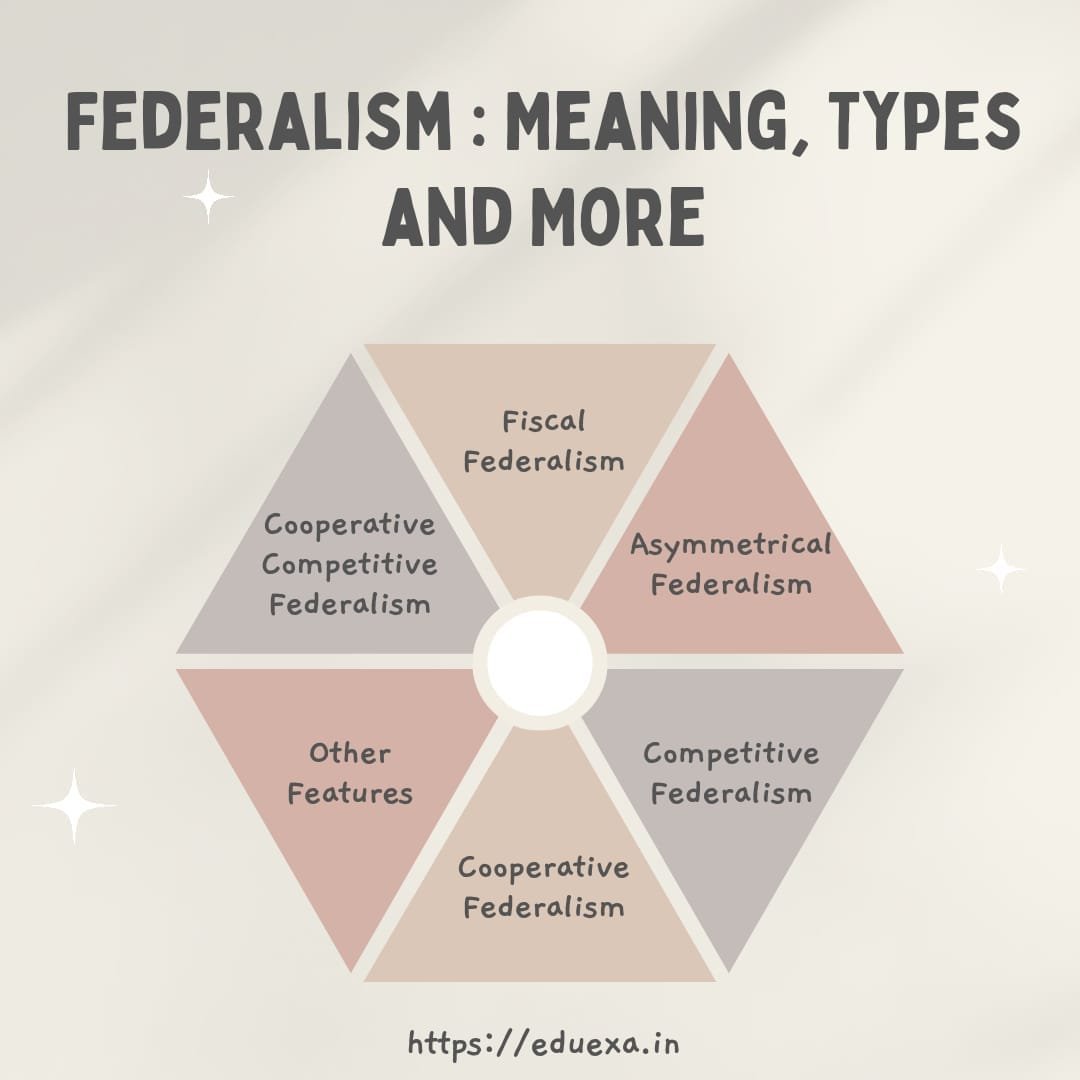What Is Federalism? The How and Why of Shared Governance
What is understood by the term federalism
Federalism is a system of government in which the power and governance subjects are divided between a central authority and various constituent units of the country. Usually, a federation has two levels of government. One is the government for the entire country that is usually responsible for a few subjects of common national interest. The others are governments at the level of provinces or states that look after much of the day-to- day administration of their state. Both these levels of governments enjoy their power independent of the other.
Federal features of Indian constitution:
Dual Polity Constitution establishes a dual polity consisting the Union at the Centre and the states at the periphery. Each is endowed with sovereign powers to be exercised in the field assigned to them respectively by the Constitution. The Union government deals with matters of national importance like defence, foreign affairs, currency, communication and so on. The state governments, on the other hand, look after the matters of regional and local importance like public order, agriculture, health, local government and so on.
Written Constitution:
It specifies the structure, organisation, powers and functions of both the Central and state governments and prescribes the limits within which they must operate. Thus, it avoids misunderstandings and disagreements between the two.
Division of Powers:
One of the salient features of federalism is clear division of power. The Constitution divided the powers between the Centre and the states in terms of the Union List, State List and Concurrent List in the Seventh Schedule.
Supremacy of the Constitution:
The Constitution is the supreme (or the highest) law of the land. The laws enacted by the Centre and the states must conform to its provisions. Further federal structure constitutes the basic structure of the constitution which can’t be disturbed.
Rigid Constitution:
The division of powers established by the Constitution as well as the supremacy of the Constitution can be maintained only if the method of its amendment is rigid. Hence, the Constitution is rigid to the extent that those provisions are concerned with the federal structure. Ex- There are certain articles which can’t be amended by parliament unanimously. It requires that the required change is passed by half of the state legislatures by a simple majority.
| Articles amendment is which required to be passed states too | |
| Article 54 and 55 relating to President’s election | Article 73 and 162 concerning extent of executive powers of centre and state respectively |
| Article 241 – High courts in UT | Article 279(A) Forming GST Council |
| Schedule 7 – Distribution of power in the the form of union list, state list, and Concurrent list | Schedule 4 dealing with representation of states in Rajya Sabha. |
| Chapter 1 of Part 11 dealing with centre state relations | Article 368 Relating to power and process of constitutional amendment |
Independent Judiciary:
The Constitution establishes an independent judiciary headed by the Supreme Court for two purposes: one, to protect the supremacy of the Constitution by exercising the power of judicial review, and two, to settle the disputes between the Centre and the states or between the states.
Bicameralism:
The Constitution provides for a bicameral legislature consisting of an Upper House (Rajya Sabha) and a Lower House (Lok Sabha). The Rajya Sabha represents the states of Indian Federation, while the Lok Sabha represents the people of India as a whole. Hence there is equal representation of states in the parliament.
Types of Federalism
Competitive Federalism:-
Traditionally it was believed that federalism is a clear cut division of power. So federalism was understood as a fight between centre and states and also among states for this power. This competition for power is known as competitive federalism.
Cooperative federalism:-
It means a combination of cooperation and interdependence between the Centre and the States to ensure smooth governance of the country. Ex- Article 263 under which interstate council can be constituted for effective enquiry and redressal of disputes.
Cooperative Competitive Federalism:-
Under it, units of federation shall continue to cooperate with each other on different fronts without giving up on the competitive spirit.
Fiscal Federalism:-
It refers to division of financial power between different units of federation. Ex- Division of revenue as per budget, distribution of tax receipts, Demand for grants etc.
Asymmetrical Federalism:-
It is an unequal relationship which centre has with various units of federation. Ex- Special Status to some states (5th and 6th schedule), More finances to some states than others, etc.



